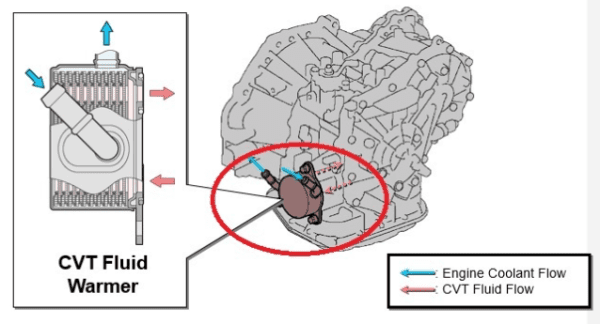Toyota automatic transmission overheating problems

Toyota Automatic Transmission Overheating Problems: Causes and Solutions
Toyota vehicles are known for their reliability, but automatic transmission overheating can be a significant issue if left unaddressed. An overheating transmission can lead to poor performance, transmission failure, and costly repairs. In this article, we’ll explore the causes of Toyota automatic transmission overheating, symptoms to watch out for, and practical solutions to prevent or fix the problem.
Common Symptoms of an Overheating Toyota Transmission
If your Toyota’s automatic transmission is overheating, you may notice the following signs:
- Burning Smell – A strong, burnt odor from the engine bay or under the car may indicate overheated transmission fluid.
- Warning Lights on the Dashboard – Some Toyota models have a transmission temperature warning light that alerts drivers when overheating occurs.
- Slipping Gears – The transmission may struggle to stay in gear, or you may feel delayed acceleration.
- Rough or Hard Shifting – Overheating can cause the transmission to shift erratically, leading to jerky or delayed gear changes.
- Fluid Leaks – High temperatures can damage seals and gaskets, causing transmission fluid leaks.
- Loss of Power – The engine may seem to work harder, but the car doesn’t accelerate as expected.
- Smoke from Under the Hood – In severe cases, overheated transmission fluid may cause smoke to rise from the engine area.
Common Causes of Toyota Automatic Transmission Overheating
1. Low or Contaminated Transmission Fluid
Transmission fluid is essential for cooling and lubricating the internal components. If the fluid level is low or dirty, the transmission cannot function efficiently, leading to overheating.
Solution:
- Check the transmission fluid level and top it up if it’s low.
- If the fluid is dark or burnt-smelling, replace it with Toyota WS (World Standard) ATF.
2. Clogged or Malfunctioning Transmission Cooler
Most Toyota automatic transmissions use a cooling system that routes transmission fluid through a separate radiator or cooler. If the transmission cooler is clogged or damaged, fluid cannot dissipate heat properly, leading to overheating.
Solution:
- Inspect the transmission cooler and hoses for blockages.
- Flush or replace the cooler if necessary.
3. Heavy Towing or Overloading
Toyota trucks and SUVs, like the Tacoma and RAV4, have towing capacities, but excessive towing can strain the transmission, causing it to overheat.
Solution:
- Avoid exceeding the recommended towing capacity for your Toyota model.
- Install an aftermarket transmission cooler if you frequently tow heavy loads.
4. Driving in Extreme Weather Conditions
Hot climates and stop-and-go traffic can put additional stress on the transmission, causing it to overheat.
Solution:
- Avoid aggressive driving in hot weather.
- If you drive in a hot region, consider adding a bigger transmission cooler.
5. Faulty Transmission Solenoids
Transmission solenoids control the flow of fluid inside the transmission. A malfunctioning solenoid can prevent fluid from circulating properly, leading to overheating.
Solution:
- Use an OBD-II scanner to check for transmission solenoid error codes.
- Replace faulty solenoids if necessary.
6. Worn-Out Clutches or Internal Components
Over time, the transmission’s clutches and bands can wear out, creating excessive friction and heat buildup.
Solution:
- If the transmission has over 100,000 miles, consider a transmission inspection or rebuild.
7. Failing Torque Converter
The torque converter allows smooth power transfer from the engine to the transmission. If it fails, it can cause the transmission to overheat.
Solution:
- If you experience shuddering or overheating, a torque converter replacement may be necessary.
How to Prevent Toyota Automatic Transmission Overheating
1. Regular Transmission Fluid Maintenance
- Change transmission fluid every 30,000 to 60,000 miles (depending on your Toyota model).
- Always use Toyota WS ATF or the manufacturer-recommended fluid.
2. Install an Auxiliary Transmission Cooler
- If you tow heavy loads or drive in extreme heat, consider installing an aftermarket transmission cooler for extra cooling capacity.
3. Avoid Aggressive Driving
- Rapid acceleration and excessive braking increase heat buildup in the transmission.
- Drive smoothly and allow the transmission to shift naturally.
4. Check the Radiator and Cooling System
- Ensure the engine radiator and cooling fans are working properly since they help cool the transmission fluid.
5. Use the Correct Gear While Towing or Off-Roading
- If towing, use tow/haul mode (if available) to reduce strain on the transmission.
- In off-road conditions, use low-range gears to prevent excessive heat buildup.
When to Seek Professional Help
If your Toyota’s automatic transmission continues to overheat, even after maintenance and fluid changes, consult a certified Toyota mechanic. Ignoring transmission overheating can result in expensive repairs or even total transmission failure.
Would you like guidance on Toyota transmission maintenance schedules or recommended aftermarket coolers? 🚗
